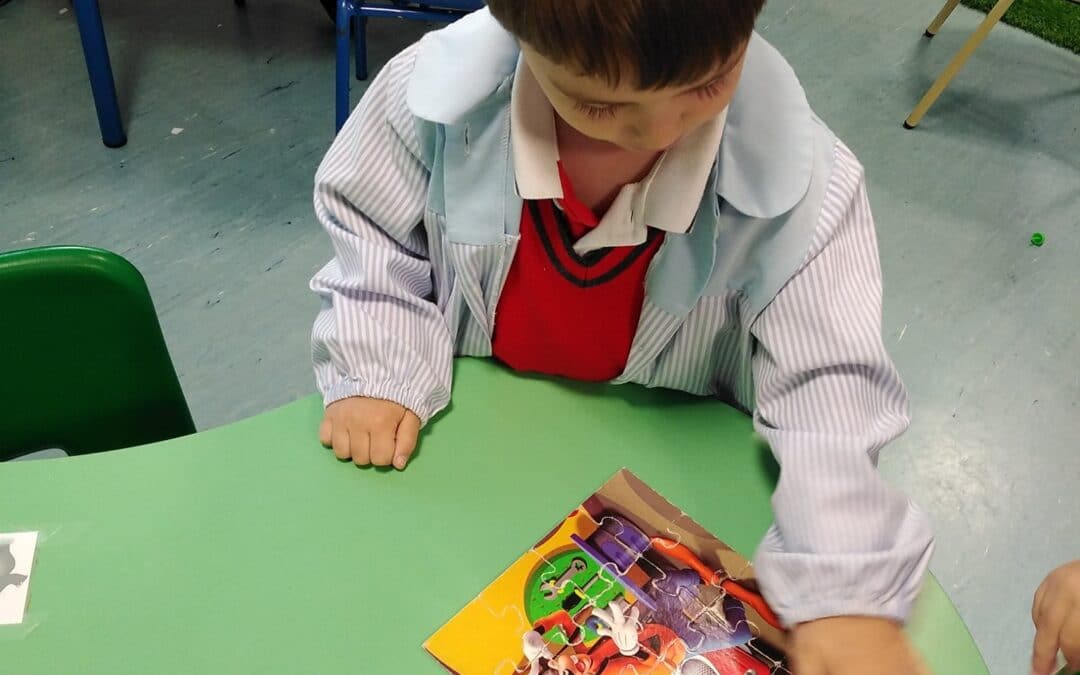Spatial intelligence is related to the ability of people to process information in three dimensions, which requires a set of mental skills that can be developed through certain activities and exercises.
From Logos Nursery School, nursery school located in Las Rozas de Madrid, in this article we will explain what spatial intelligence is and how to develop it in children, as well as its characteristics and some specific examples to improve it.
What is spatial intelligence?
Spatial intelligence is a concept that has its origin in Howard Gardner's theories of multiple intelligences, which point out that there are no people more intelligent than others, but that each individual throughout his life develops more one type of intelligence than another.
In other words, spatial intelligence is the ability to visualize, imagine and represent ideas and mental images from different angles by rotating them in your mind.
This type of intelligence allows processing information in a two-dimensional and three-dimensional plane, which is very useful in solving spatial problems, whether real or abstract.
How to improve spatial intelligence with specific exercises?
At first it was thought that this type of intelligence referred to innate abilities, a product of genetics, but the truth is that they can be developed with certain training by performing specific exercises, for example:
- Playing chess.
- Flying a drone.
- Making spatial drawings.
- Doing puzzles.
- Playing with Legos.
- Making a model.
Spatial intelligence and vision: how they are related
Vision plays an important role in spatial intelligence. Sight is one of the most relevant senses when it comes to understanding our environment, however, it is not limited only to visual capacity. Blind people in the absence of visual stimuli can also develop their spatial intelligence thanks to the information obtained through their other senses.
Many people have the ability to visualize objects in their brain with great precision thanks to a great interpretation of visual signals, for example: movement, color, shape, among others. It is also important to note that there are children and adults whose learning is done more naturally visually, since they think in terms of space, so it is essential to use visual strategies such as graphics, drawings, photographs, models, videos or diagrams, among others.
How can you improve your spatial intelligence?
Undoubtedly, there are studies that show that spatial intelligence can be improved through certain training, just as it happens when you want to develop certain skills or intelligence in general.
Spatial vocabulary
This type of intelligence is directly related to a spatial vocabulary, so it is recommended to introduce children to this type of language. Research has shown that children who have a better command of spatial terminology can solve spatial problems more effectively, such as putting together figures with blocks. It is not a matter of having the child memorize some terms, it is necessary to help him/her by using descriptive vocabulary, for example, "look for the cube in the third drawer behind the cupboard" or "on the top right shelf".
Rotation exercises
The practice of rotation exercises is also effective in improving spatial intelligence with activities such as playing with a Rubik's cube, making figures with Tangram, etc.
Solving mazes and other games
Mazes help to develop spatial orientation, as well as contributing to the development of fine motor skills in children. Playing with cubes favors spatial dexterity and at the same time helps in logical-mathematical reasoning, memory and motor coordination.
There are several activities and exercises that can be performed to develop spatial intelligence, which will be reflected in the ability to draw, relate objects, orient in space, among others, highlighting in various professional fields, such as architecture, design, advertising, decoration, photography, programming, etc..

